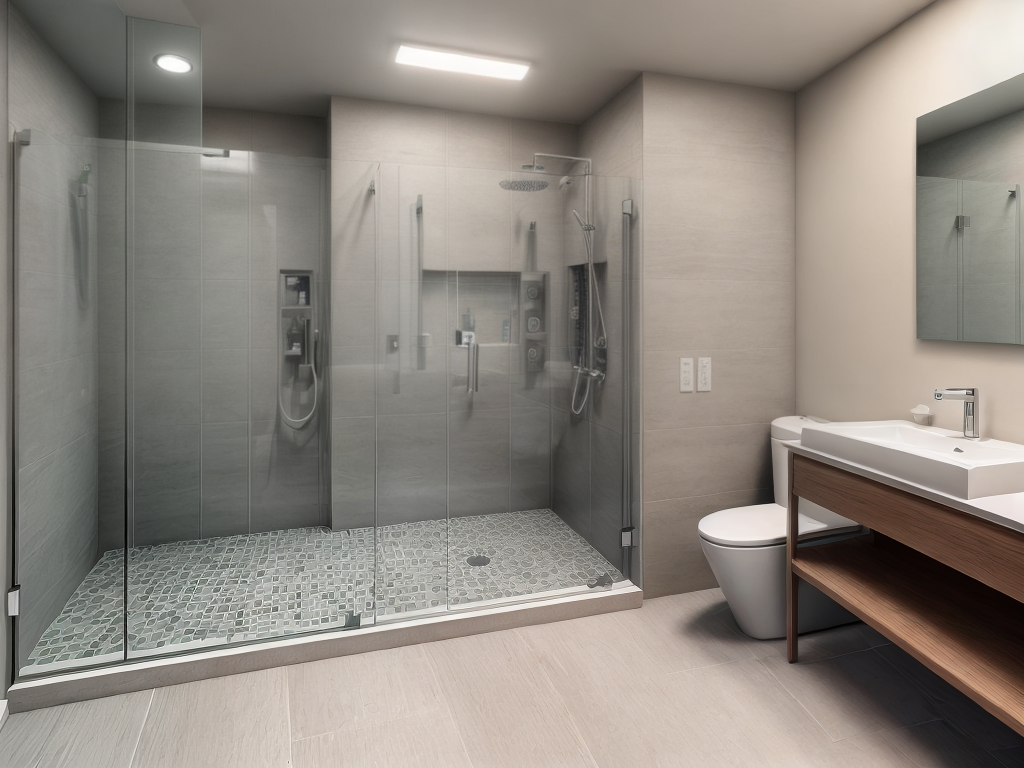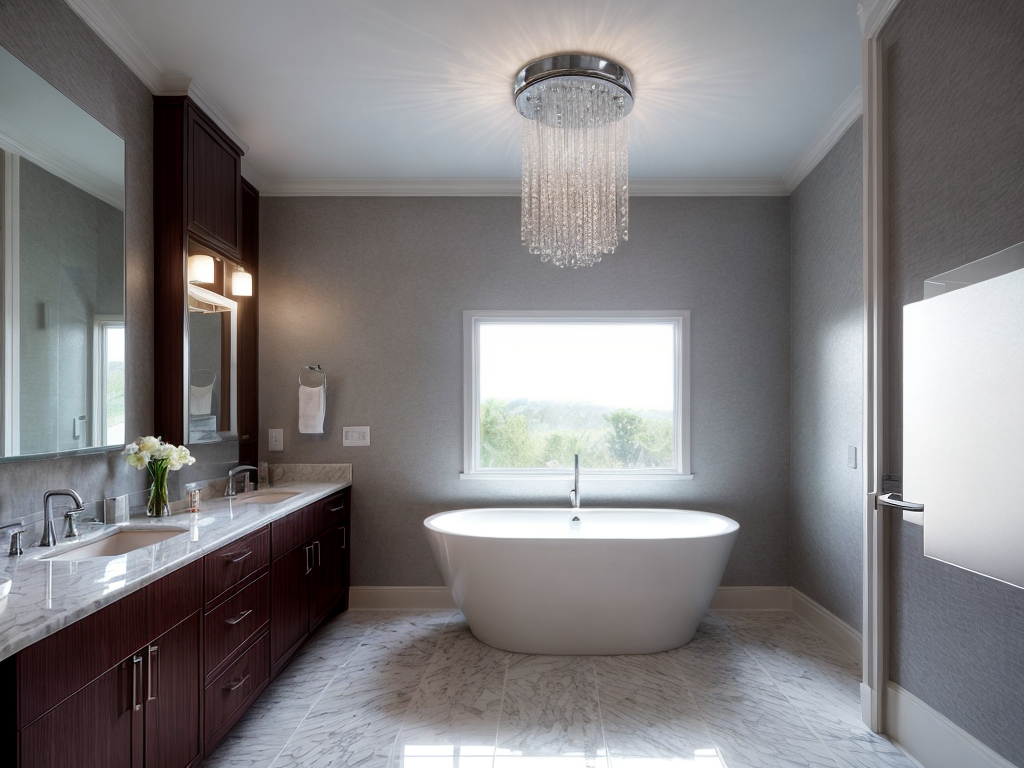Don’t Forget to Install Accessible Outlets in Your New Bathroom
When planning your bathroom remodel, it’s essential to consider where electrical outlets will be available for corded devices like blow-dryers and hair dryers. Avoid placing these appliances near sinks where their cords could potentially cross over, as this is a potentially hazardous scenario.
ADA Requirements
Under the Americans with Disabilities Act (ADA), business owners must modify their facilities so that people with disabilities can access them easily. This includes installing ADA-compliant entrances, restrooms and other public areas.
As a business owner, you must guarantee all employees and visitors have full access to your premises. This is an immense benefit for your organization and may increase customer traffic significantly.
ADA compliance doesn’t need to be a challenge and can easily be achieved with simple upgrades to existing bathrooms or new construction. For instance, grab bars can help those with mobility issues enter showers and tubs more easily as well as reach the toilet seat. Furthermore, faucets that use just one hand are an easy option that’s available on some models.
To guarantee that your bathroom meets ADA guidelines, take measurements first. You can draw out a floor plan on paper or create one using your computer; however, the best approach is to take an actual walk around the room and measure its dimensions.
Once you have your layout created, take a minute to examine all of your fixtures. Are there any areas that appear tight or difficult for someone in a wheelchair to navigate?
Furthermore, look for a sink that meets the ADA requirement of 34 inches tall. This height is ideal for people in wheelchairs to reach while still offering adequate knee clearance.
For your urinal, opt for one that measures at least 13 1/2 inches deep and has a rim height of 17 inches. Additionally, make sure the floor space is 30 inches wide by 48 inches deep.
Finally, make sure your grab bars are securely attached to the wall and stay put in their brackets. Doing this reduces the chance that they could slip out from underneath a bathroom door and injure someone.
Establishing an ADA-compliant bathroom is a great way to promote your business and assist customers and visitors who may require special accommodations when using it. Furthermore, having this type of restroom helps protect you against any disciplinary actions taken against you for non-compliance with ADA standards.
GFCI Requirements
Ground fault circuit interrupters (GFCI outlets) are an essential safety measure in bathrooms. They prevent electrical shocks by tripping the circuit power when they detect an imbalance in current flow – especially important around water-prone areas like sinks and showers.
According to the National Electrical Code, GFCIs are required in homes with bathrooms, garages and grade-level portions of unfinished accessory buildings. They may also be installed in crawl spaces, basements and outdoor receptacles.
Before installing bathroom outlets, determine your power needs. This will help determine where the outlets should go and how many you should install.
When planning your electrical needs, take into account whether you have hand-powered grooming tools or modern, high-tech devices like vacuum cleaners, hair dryers and curling irons. Also take into account if multiple devices will be running simultaneously – in which case it might be wise to add extra circuits and outlets.
When selecting where to place outlets, look for an area that makes plugging and unplugging simple–such as at the top of a countertop near the sink or on a shelf above it. You could even install an outlet in your bathroom cabinet or closet if it’s close enough to be used regularly.
Once you’ve decided where to place the outlets, it’s time to wire them. GFCI outlets don’t have push-and-lock inlet holes so each hot wire must be wrapped clockwise around its corresponding terminal screw and tightened with a screwdriver.
Next, you must attach a ground wire to the green ground screw of the receptacle. You can either join these wires together with pliers or use ground crimps for this step.
If you’re uncertain how to wire a GFCI, a licensed electrician can do the work for you. They know how to connect the ground wires in such a way that protects both you and your home from electrocution.
You may opt to purchase a GFCI breaker, which will protect the entire circuit and eliminate the need to connect individual outlets. This is ideal for outdoor spaces or garages with multiple GFCI outlets.
Tamper-Resistant Receptacles
The National Electrical Code (NEC) requires that all outlets be tamper-resistant. This is an invaluable safety feature for any outlet in your home, especially those which will be used by children.
Tamper-resistant outlets feature two spring-loaded shutters that automatically close when a plug is removed, then open again when you insert another. If a child attempts to insert something into one of these openings, the shutters won’t open.
These are the best ways to protect your home from electric shock and injury. Studies show that children account for 89% of all electrical burns and shocks in homes.
Tamper-resistant outlets come in a range of materials. Some are plastic, while others are metal and typically feature insulation to prevent contact with hot parts.
Tamper-resistant outlets, also known as ground fault circuit interrupters (GFCIs), can detect leaks in an electrical circuit and stop the flow of current. They’re especially helpful in damp or wet areas like restrooms, outdoor pool areas, laundry rooms, garages, and kitchens.
Most of these are rated for 15 and 20 amps, shielded to accept common household and office electrical devices.
In addition to tamper-resistant outlets, you may want to consider switching your outlets to ones controlled by a switch in the room. This is an effective way to maximize functionality while decreasing energy consumption in the space.
Modern bathroom designs often feature multiple outlets on a single circuit. This makes it simple to add extra outlets as needed for lighting, sinks, mirrors, or other devices.
Installing a switch between your receptacles allows you to control lights and other devices without having to turn them off manually, potentially saving on electricity bills while improving bathroom convenience.
Tamper-resistant outlets are an excellent choice for installing accessible outlets in your new bathroom. Not only are they secure and convenient, but they can help prevent injuries to children. Therefore, these outlets make perfect sense for new construction, major remodeling projects, or other scenarios where children will be present.
Combination AFCI/GFCI Receptacles
When renovating your bathroom, remember to include accessible outlets. Every year in America, around 4,400 people are injured or killed due to electrical hazards in homes – accidents which could have been avoided with proper home safety practices.
One type of outlet that meets current building codes is an AFCI/GFCI combination receptacle. These outlets use a breaker capable of both detecting arc faults and ground faults, allowing them to interrupt the circuit when a faulty wire is detected, as well as protecting downstream side if connected to different load.
Generally, electrical outlets are designed to be tamper resistant. This means they will trip if someone tries to open or use them without authorization. This is especially important in areas like showers, bathtubs or sinks where water may be present.
Combination AFCI/GFCI breakers are more energy-efficient than regular breakers or receptacles because they monitor the current on each circuit. This technology prevents hazardous wiring issues from occurring by quickly locating and de-energizing any faulty wiring. Not only does this save time and money in the long run, but it can alert you to any potential issues before they become serious issues.
In addition to the advantages listed, these breakers also safeguard your property against damage and fire. This is because they prevent arcing – a major cause of electrical fires – by detecting problems before they escalate out of control.
These UL 489 certified receptacles can be installed in new construction, remodeling projects, replacements and modifications. They’re an excellent choice for businesses and commercial applications such as schools and hospitals.
These receptacles are NEC compliant and meet the most recent National Electrical Code requirements. They come in various finishes that are compatible with most modern wiring systems, making them suitable for both new construction and renovation projects – such as bathrooms, kitchens, laundry rooms or any other place you need AFCI or GFCI protection.



